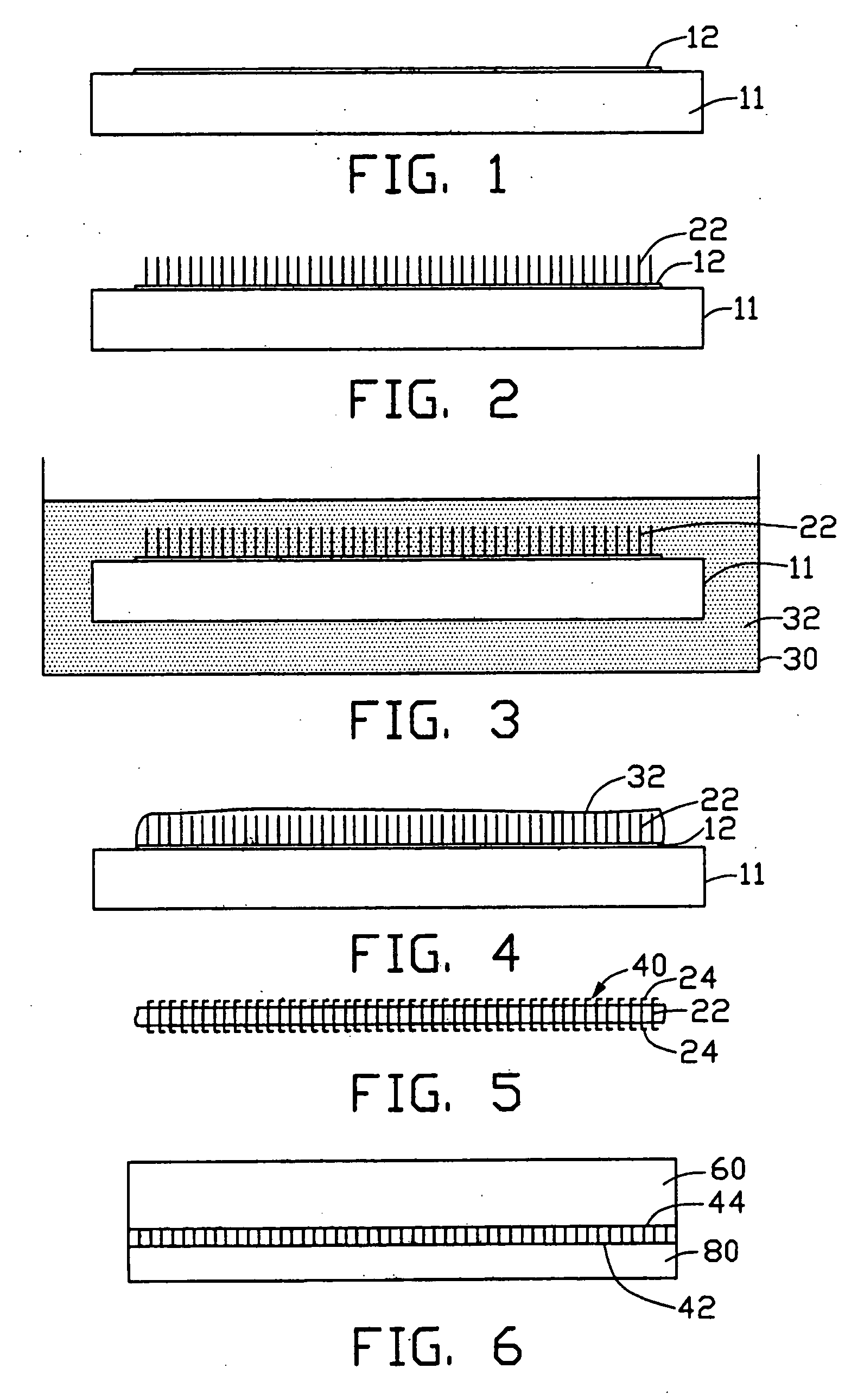Thermal interface material and method for manufacturing same
a technology of thermal interface material and thermal interface, which is applied in the field of thermal interface materials, can solve the problems of inadequate heat dissipation requirements of modem electronic components, the thickness of this kind of thermal interface material is limited to greater than b>, and the heat conduction coefficient of the thermal interface material is now considered too low for many contemporary applications, etc., to achieve good flexibility, reduce thickness, and reduce the effect of thickness
- Summary
- Abstract
- Description
- Claims
- Application Information
AI Technical Summary
Benefits of technology
Problems solved by technology
Method used
Image
Examples
Embodiment Construction
[0029] Referring to FIG. 1, a substrate 11 having a catalyst film 12 attached thereon is shown. In FIG. 2, an array of carbon nanotubes 22 directionally formed on the substrate 11 is shown. The carbon nanotubes 22 are manufactured by way of thermal chemical vapor deposition or plasma enhanced chemical vapor deposition. In a preferred method of the present invention, the carbon nanotubes 22 are manufactured as follows. Firstly, the substrate 11 is provided. The substrate 11 can be made of glass, quartz, silicon, or alumina. In the preferred embodiment, the substrate 11 is made of porous silicon. A surface of the porous silicon is a porous layer. Diameters of apertures in the porous layer are extremely small, generally about 3 nanometers. Then the catalyst film 12 is uniformly disposed on the substrate 11 by chemical vapor deposition, thermal disposition, electron-beam disposition, or sputtering. The catalyst film 12 can be made of iron (Fe), cobalt (Co), nickel (Ni), or an alloy ther...
PUM
| Property | Measurement | Unit |
|---|---|---|
| thickness | aaaaa | aaaaa |
| thickness | aaaaa | aaaaa |
| temperature | aaaaa | aaaaa |
Abstract
Description
Claims
Application Information
 Login to View More
Login to View More - R&D
- Intellectual Property
- Life Sciences
- Materials
- Tech Scout
- Unparalleled Data Quality
- Higher Quality Content
- 60% Fewer Hallucinations
Browse by: Latest US Patents, China's latest patents, Technical Efficacy Thesaurus, Application Domain, Technology Topic, Popular Technical Reports.
© 2025 PatSnap. All rights reserved.Legal|Privacy policy|Modern Slavery Act Transparency Statement|Sitemap|About US| Contact US: help@patsnap.com


